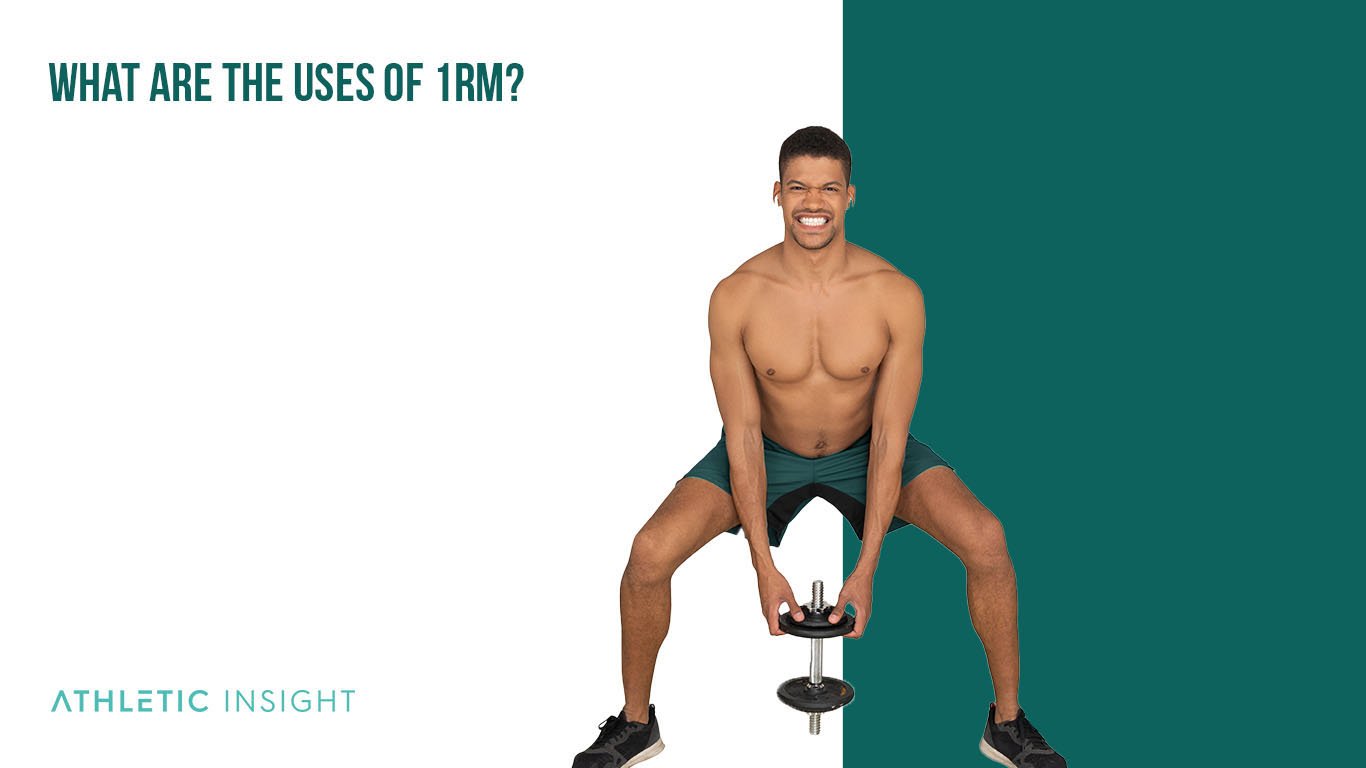In the realm of fitness and strength training, the One-Rep Max (1RM) is a critical concept. It represents the maximum amount of weight an individual can lift for one repetition while maintaining proper form. Understanding the importance of 1RM provides valuable insights into an individual’s strength capabilities, enabling tailored training programs and the assessment of progress over time.
While some people use the 1RM for bragging rights, it is an important metric to keep track of your progress and to give yourself a goal to work towards. Lifting heavy weights has many benefits, especially when it comes to bone density, muscle growth and increased strength, all of which can be facilitated when working towards a one rep max challenge with yourself.
What is 1RM in Fitness?
In fitness, the 1RM refers to the maximum weight a person can lift for a single repetition of a specific exercise while maintaining proper form. It serves as a benchmark for evaluating an individual’s strength and muscular capabilities, allowing for comparisons across different exercises and individuals.

What does 1RM stand for?
The 1RM stands for “one-rep max,” which is a measure of the heaviest weight a person can lift for one repetition of a specific exercise while maintaining proper form. The 1RM is common amongst athletes that are involved in sports that require a great deal of strength such as football, rugby and powerlifting. There is even an Olympic Sport that focuses on the 1RM and how much participants can lift.
What is the importance of 1RM?
Measuring 1RM is crucial for several reasons. It enables fitness professionals and athletes to gauge their strength capabilities, tailor training programs, and assess progress over time. Additionally, knowing one’s 1RM allows for the determination of appropriate training loads and ensures that individuals are working within safe limits to avoid injury.
What are the uses of 1RM?
The 1RM serves various purposes in the context of fitness and strength training.

- Assess an individual’s strength capabilities
- Design personalized training programs
- Monitor progress over time
- Identify potential imbalances or weaknesses in the musculoskeletal system
- Calculate appropriate training loads for different exercises
How to measure your 1RM?
To accurately measure your 1RM, follow these steps.
- Start off with a light resistance exercise that you can complete 5–10 reps of with ease
- Rest for at least 1 minute
- With a load that you can perform 3–5 reps of, continue the warm-up
- Rest for at least 2 minutes
- Calculate a load that is nearly your maximum capacity for two to three repetitions
- Rest for 2-4 minutes
- Put on more weight
- Try a 1-RM
- Repeat step 7 if you’re successful. If you don’t succeed, take a 2-4 minute break, lower the weight, and try again at step 8
- Continue changing the load up or down once you can successfully complete one rep with good form
1. Start off with a light resistance exercise that you can complete 5–10 reps of with ease.
Begin your 1RM testing by selecting an exercise and performing a set with a manageable weight. This initial set serves as a warm-up, preparing your muscles for the heavier loads to follow. Select a resistance that allows you to perform 5-10 repetitions with ease, focusing on maintaining proper form throughout the movement.
2. Rest for at least 1 minute.
After completing the initial set, allow your muscles to recover by resting for a minimum of one minute. This rest period helps to prevent fatigue and ensures that you can perform subsequent sets with maximal effort.
3. With a load that you can perform 3–5 reps of, continue the warm-up.
Increase the resistance to a level where you can complete 3-5 repetitions with proper form. This increment serves as an intermediary step, bridging the gap between the warm-up and the heavier loads required for 1RM testing.
Add 10–20 pounds, or 5–10%, to the weight you used in step 1 for the upper body lifts.
For upper body exercises, increase the resistance by 10-20 pounds or 5-10% of the weight used in step 1. This increment prepares your muscles for the heavier loads to come while minimizing the risk of injury.
Add 30-40 pounds, or 10-20%, to the weight you used in step 1 for lower body lifts.
For lower body exercises, add 30-40 pounds or 10-20% of the weight used in step 1. This increase further warms up your muscles and prepares them for the upcoming heavier loads, while still prioritizing safety and injury prevention.
4. Rest for at least 2 minutes.
After the second warm-up set, allow your muscles to recover by resting for at least two minutes. This rest interval helps to prevent premature fatigue and ensures optimal performance during the 1RM testing phase.
5. Calculate a load that is nearly your maximum capacity for two to three repetitions.
Estimate a resistance level that challenges your strength capabilities, allowing you to complete only two to three repetitions with proper form. This weight should be close to your 1RM but still manageable.
Add 10–20 pounds, or 5–10%, to the weight you used in step 3 for upper body lifts.
Increase the resistance for upper body exercises by an additional 10-20 pounds or 5-10% of the weight used in step 3. This increment brings you closer to your 1RM, allowing for a more accurate assessment of your strength capabilities.
Add 30-40 pounds, or 10-20%, to the weight you used in step 3 for lower body lifts.
For lower body exercises, increase the weight by 30-40 pounds or 10-20% of the weight used in step 3. This higher resistance level enables a more precise evaluation of your lower body strength and 1RM.
6. Rest for 2-4 minutes.
Allow your muscles to recover by resting for 2-4 minutes before attempting your first 1RM trial. This rest period helps to minimize fatigue and optimizes performance during the testing phase.
7. Put on more weight.
Increase the resistance to a level that challenges your ability to complete a single repetition with proper form. This weight should be close to, if not at, your estimated 1RM.
Add 10-20 pounds, or 5-10%, to the weight you used in step 5 for the upper body lifts.
For upper body exercises, add 10-20 pounds or 5-10% of the weight used in step 5. This increment brings you closer to your true 1RM, allowing for a more accurate assessment of your strength capabilities.
Add 30-40 pounds, or 10-20%, to the weight you used in step 5 for lower body lifts.
Increase the resistance for lower body exercises by 30-40 pounds or 10-20% of the weight used in step 5. This higher resistance level enables a more precise evaluation of your lower body strength and 1RM.
8. Try a 1-RM.
Attempt to perform a single repetition with the selected weight while maintaining proper form. If successful, this weight may be close to your true 1RM. If not, adjustments will need to be made in subsequent trials.
9. Repeat step 7 if you’re successful. If you don’t succeed, take a 2- to 4-minute break, lower the weight, and try again at step 8.
If you successfully complete a single repetition, consider repeating step 7 to verify your 1RM. If unsuccessful, rest for 2-4 minutes to allow for recovery, then decrease the weight and attempt the lift again at step 8.
Remove 5–10 pounds, or 2.5–5%, of the weight you used for the upper body lifts.
For upper body exercises, reduce the resistance by 5-10 pounds or 2.5-5% of the weight used during the failed attempt. This decrease will help to identify a more appropriate weight for accurately assessing your 1RM.
Remove 15-20 pounds, or 5–10% of the weight you used in step 7 for lower body lifts.
For lower body exercises, decrease the weight by 15-20 pounds or 5-10% of the weight used during the unsuccessful lift. This adjustment will better position you to successfully complete a single repetition and determine your 1RM.
10. Continue changing the load up or down once you can successfully complete one rep with good form.
After successfully completing a single repetition with proper form, you may continue adjusting the weight up or down, as necessary, to fine-tune your 1RM assessment. Remember to prioritize proper form and safety throughout the process.
What are the different Formulas for Calculating 1RM?
Several formulas exist for estimating 1RM, including the Epley, Lander, Lombardi, O’Conner, Schwartz, and Wathan formulas. Each formula uses a unique equation based on the number of repetitions performed and the weight lifted to predict 1RM.
- Epley formula: The Epley formula is calculated as: 1RM = weight lifted x (1 + 0.0333 x number of repetitions)
- Lander formula: The Lander formula is calculated as: 1RM = weight lifted / (1.013 – 0.0267123 x number of repetitions)
- Lombardi formula: The Lombardi formula is calculated as: 1RM = weight lifted x number of repetitions x 0.1 + weight lifted
- O’Connor formula: The O’Connor formula is calculated as: 1RM = weight lifted x (1 + 0.025 x number of repetitions)
- Schwartz formula: The Schwartz formula is calculated as: 1RM = (weight lifted x number of repetitions) / 30 + weight lifted
- Wathan formula: The Wathan formula is calculated as: 1RM = (weight lifted x 100) / (48.8 + 53.8 x e^(-0.075 x number of repetitions))
What are the common 1RM Tests?
Common exercises used for 1RM testing include the bench press, barbell back squat and deadlift. However, any exercise can be used for a 1RM if the athlete wants to keep track of progress.
1. Bench Press
The bench press is a popular upper body strength assessment that primarily targets the pectoral, deltoid, and triceps muscles. To perform a 1RM bench press, lie on a flat bench with feet firmly planted on the ground and hands positioned just outside shoulder-width on the barbell. Lower the barbell to the chest, then press upward to full arm extension.
2. Lat Pulldown
The lat pulldown is a back exercise that focuses on the latissimus dorsi, along with the biceps and forearm muscles. To perform a 1RM lat pulldown, sit at the machine and grasp the bar with a wide grip. Pull the bar down to your upper chest while maintaining an upright posture, then slowly return to the starting position.
3. Leg Press
The leg press is a compound lower body exercise targeting the quadriceps, hamstrings, glutes, and calves. To perform a 1RM leg press, sit in the machine with your back and head supported, placing your feet shoulder-width apart on the platform. Extend your legs fully, then slowly return to the starting position.
4. Back Squat
The back squat is a fundamental lower body strength assessment that targets the quadriceps, hamstrings, glutes, and calves. To perform a 1RM back squat, stand with your feet shoulder-width apart and the barbell positioned on your upper back. Lower your body by bending your knees and hips, then rise to a standing position.
5. Chest Press Machine
The chest press machine is an alternative to the bench press, targeting the pectorals, deltoids, and triceps. To perform a 1RM chest press, sit in the machine with your back supported, and grasp the handles with palms facing forward. Press the handles forward until your arms are fully extended, then return to the starting position.
6. Knee Extension
The knee extension is an isolation exercise that targets the quadriceps. To perform a 1RM knee extension, sit in the machine with your back supported and position the pad just above your ankles. Extend your legs fully, then return to the starting position.
7. Biceps Curl
The biceps curl is a classic isolation exercise that targets the biceps brachii. To perform a 1RM biceps curl, stand with feet shoulder-width apart, grasping a barbell or dumbbells with palms facing forward. Curl the weight toward your shoulders, then slowly lower it back to the starting position.
What is the advantage of knowing your One Rep Max?
Knowing your 1RM offers several benefits, such as providing a benchmark for measuring strength improvements, allowing for individualized programming by basing workouts on a percentage of your 1RM, and enabling comparisons of strength levels among individuals, irrespective of body size or weight.

Is there a disadvantage to knowing your One Rep Max?
While knowing your 1RM can be advantageous, there are some potential drawbacks. Performing a 1RM test may pose a risk of injury, especially if proper form and technique are not prioritized. Additionally, relying solely on 1RM as a measure of strength may not provide a comprehensive understanding of an individual’s overall fitness level.
Is there a way to increase your 1RM?
Yes, increasing your 1RM can be achieved through consistent strength training, focusing on progressive overload, proper technique, and adequate recovery. Implementing periodization, a structured approach to varying training intensity and volume, can also contribute to improvements towards increasing your 1RM.
Is One-Rep Max Calculator accurate?
One-rep max calculators can provide a reasonable estimation of an individual’s 1RM; however, their accuracy may vary depending on the formula used, the individual’s training experience, and the specific exercise being tested. Directly testing your 1RM remains the most accurate method of determination.
What percentage of your max should you lift for strength?
For strength development, it is generally recommended to lift at a higher intensity, typically between 75-95% of your 1RM, while performing lower repetitions (1-6) and allowing for longer rest periods between sets.
How often should you attempt a 1 rep max?
Attempting a 1RM should be done sparingly, with most recommendations suggesting every 8-12 weeks, allowing for adequate time to focus on strength development and technique improvement. This frequency also helps to minimize the risk of injury associated with maximal lifting.
Can you build muscle with 50% 1RM?
Yes, building muscle with 50% 1RM is possible, particularly when utilizing higher repetitions (8-12) and focusing on moderate to high training volume. This intensity range promotes muscle hypertrophy, or growth, by inducing muscular fatigue and stimulating the necessary adaptations for muscle development.



